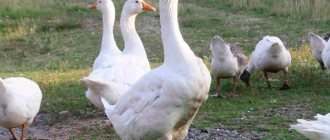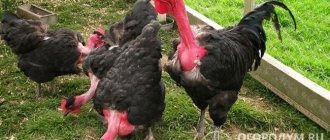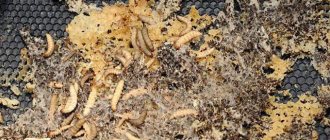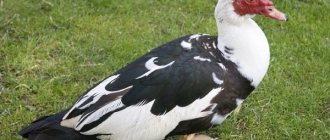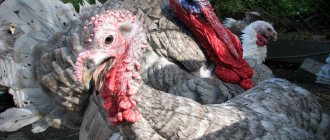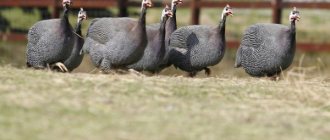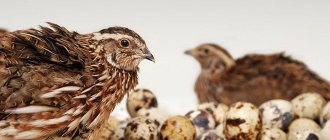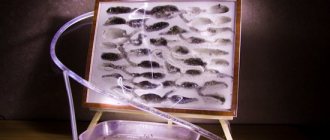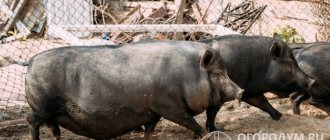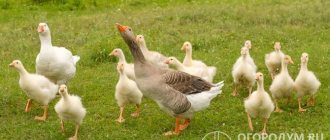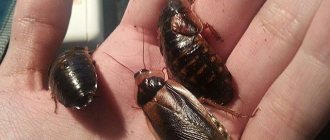Hybrid Converter turkeys, which are incredibly popular among farmers and amateur poultry farmers all over the world, are distinguished by a rare combination of decorative appearance, low maintenance requirements and the ability to quickly gain weight.
This heavy cross was created by Canadian breeders by crossing bronze broad-breasted and white Dutch turkeys in order to quickly produce large volumes of delicious meat. The result obtained more than justified all hopes.
The main characteristics of Hybrid Converter turkeys are presented:
- rapid weight gain;
- the ability to easily tolerate both cold and heat, allowing them to be kept free-range throughout spring, summer and autumn;
- excellent taste of meat, which is a dietary product;
- average level of egg production;
- high quality fluff, which must be collected at slaughter.
Despite their impressive dimensions, Hybrid Converter turkeys can reach speeds of up to 45 km/h in case of danger. For this feature, farmers jokingly call them “Indo-ostriches.” In addition, they can easily overcome a two-meter height, so the height of the walls surrounding the enclosure must be at least 2.5 m.
Description and characteristics of the bird
The hybrid converter can be described as the heaviest and most voluminous representatives of turkeys. Thanks to this and especially lush plumage, they were given the nickname - Indo-ostrich.
Exterior of the breed
The bird looks very unusual and even defiant. These are the largest birds raised in agriculture. Males tend to be larger in size and more striking in appearance.
Visual characteristics of representatives of the Hybrid Converter cross:
- plumage color : white;
- head : small in size with a large beak. In males, there is a long scarlet-colored growth-earring on the beak;
- tail : in females it is small in size and lowered, in males it is fluffy and looks like a loose shuttlecock;
- Dimensions : well-developed muscles of the entire body, wide chest and powerful limbs.
Although broilers are heavy, they are quite mobile. They can easily fly to a height of 2 meters and also run quickly at a speed of about 40 km/h.
Temperament
Within their flock, Hybrid Converter crosses behave calmly and phlegmatically. However, this attitude does not extend to other inhabitants of the poultry farm. They do not get along well with them and can be aggressive.
The value of dietary meat
Turkey meat is dietary, but at the same time juicy and tender. It does not cause allergic reactions and is therefore suitable for children's first complementary foods. It contains a lot of protein, B vitamins and selenium.
conclusions
When breeding any poultry, you want to get a good result, because a lot of energy and money are invested in buying and raising it. Many poultry farmers have switched to raising turkeys. Because they are able to gain a lot of mass in a very short time. In addition, turkeys have good egg production and are also good and caring mothers. There are a little more than 30 breeds and crosses, so there is plenty to choose from:
The pros and cons of raising turkeys as a business, read this link.
Source
Productivity of hybrid turkeys
Hybrid Converter turkeys are the heaviest members of the family. They gain a lot of muscle mass in a short time - males at 5 months weigh in the range from 19 to 24 kg, and females 13–16 kg. Therefore, it is more profitable to raise males for the meat industry.
The bird is sent for slaughter at 4–5 months of life. On average, meat production from a carcass is 81–85%. The breast accounts for 30%.
Poultry Size and Weight Standard
The chick weighs about 50 grams at birth. And thanks to high-quality, balanced nutrition and good housing conditions, Hybrid Converter cross turkeys quickly become heavy.
The table shows weekly poultry weight indicators:
| Age of turkeys, weeks | Weight of females, grams | Male weight, grams |
| 1 | 150 | 160 |
| 2 | 380 | 380 |
| 3 | 710 | 740 |
| 4 | 1160 | 1280 |
| 5 | 1700 | 1950 |
| 6 | 2360 | 2760 |
| 7 | 3160 | 3760 |
| 8 | 4050 | 4840 |
| 9 | 4980 | 6040 |
| 10 | 5940 | 7370 |
| 11 | 6880 | 8750 |
| 12 | 7800 | 10120 |
| 13 | 8660 | 11500 |
| 14 | 9450 | 13050 |
| 15 | 10160 | 14500 |
| 16 | 10820 | 15990 |
| 17 | 11400 | 17400 |
| 18 | 11910 | 18070 |
| 19 | 12370 | 19910 |
| 20 | 12750 | 21090 |
| 21 | 13100 | 22180 |
| 22 | 13540 | 23240 |
Egg production of the breed
With moderate nutrition, turkey egg production is 80 eggs per year. If it is transferred to intensive fattening, the number of eggs can increase to 150. They can be consumed both raw and after thermal exposure.
Visually, the eggs are of the correct shape, the shell is smooth and dense to the touch. Their average weight is about 80 grams.
What kind of unpretentious ones are there?
Compared to chickens, turkeys are quite fastidious birds, but there are still breeds that are less demanding on climatic conditions and feed. Perhaps a novice poultry farmer who has decided to have turkeys should practice on chickens, because breeding and keeping them are a little similar. But if you still decide to start breeding turkeys, you need to know which breeds are less capricious so that the business you have started will be crowned with success.
Black Tikhoretskaya
Belongs to the lung group. The breed got its name because the color of the birds' plumage is black. Turkeys of this species also have the following common characteristics:
Strong muscles and slightly elongated body;
The weight of an adult turkey can reach 10 kg, females up to 5. In some cases, these figures can be slightly higher. The male is much larger in size, almost twice as large. The Tikhoretsk breed has the following positive qualities:
The amount of meat from the total body weight of this breed is about 60 percent. Poultry can be slaughtered from 17 weeks of life. By then she gains weight up to 3 kg. However, experienced farmers recommend waiting a little so that the young animals have time to gain more weight.
The Tikhoretsk turkey can lay more than 80 eggs per season, so this breed can be bred not only for the purpose of producing meat.
Kubanskaya
The birthplace of this breed is the Krasnodar region. To breed Kuban turkeys, breeders needed to do serious work. And the result was not long in coming. The Kuban breed of turkeys is unpretentious in keeping and adapts well to almost any climatic conditions. The bird is quite active, so for its breeding it is advisable to designate an area for walking. Turkeys of this breed have good immunity, which resists many diseases. With proper maintenance, the mortality rate of young animals is low. With a properly balanced diet and comfortable housing conditions for the bird, a turkey is capable of laying more than 100 eggs per year.
The survival rate of chicks to adulthood is ninety percent, which is a relatively high figure. You can find out how to care for turkey poults here.
Kuban turkeys tolerate low temperatures well, so they can be grown in different climatic zones. When feeding, they do not require any special diet, so maintenance costs will not be high.
French, weight 12-13 kg
Turkeys of this breed have beautiful feathers and relatively small sizes. By the 4th month of life, the bird reaches its maximum weight and can be slaughtered for meat. The survival rate of turkey poults is about 75–90 percent to adulthood. This fairly high viability rate is due to the bird’s good immunity. The weight of adult individuals reaches 12-13 kg. The French breed of turkeys is unpretentious to food and does not require the inclusion of expensive feed additives in the diet.
Birds of the French breed are active and mobile, therefore, when planning a poultry house, it is advisable to allocate an area for them to walk in open space.
Comparison with other breeds
In addition to the Turkey Hybrid Converter, there are 3 more common breeds of broilers - Big-6, Chidon and Canadian Broad-breasted.
They are united by delicious, high-quality meat and healthy eggs. But each species also has its own characteristics, which affect the conditions of detention and nutrition.
| Characteristics | Hybrid Converter | Big 6 | Hidon | Canadian broad chested |
| Average adult weight | Male up to 24 kg Female up to 16 kg | Male up to 20–24 kg Female up to 13 kg | Male up to 20 kg Female up to 10 kg | Male up to 30 kg Female up to 24 kg |
| Ready for slaughter | 21–23 weeks | 20 to 30 weeks | 20–22 weeks | 6 to 15 weeks |
| Plumage color | White | White with black spot on breast area | White | Black with a hint of bronze |
| Egg production | 80 pcs | 100 pieces | 90–110 pcs | 90 pcs |
| Breed Features | Precocity Disease resistance Quick adaptation to external conditions | Precocity Low stress resistance leading to weight loss | Poorly tolerate changing weather conditions, drafts and dampness | Prone to intestinal infections |
Largest turkey: Canadian
Everyone knows that turkeys are the largest poultry. But among them there are record holders for weight. This is, for example, a Canadian turkey. It belongs to the broiler type and is the result of the work of Canadian breeders. This poultry has a unique and characteristic exterior:
Long and massive legs;
Fattening this cross is profitable until the age of 90 days, then the bird goes to slaughter.
Characteristics: how much does it weigh
Main productivity indicators of Canadian turkeys:
| Indicators | Units | Productivity |
| Turkey live weight | kg | up to 30 |
| Turkey live weight | kg | until 17 |
| Egg production | things | about 100 |
| Egg weight | gram | from 70 to 80 |
| Laying period | months | from 9 to 15 |
| Egg hatchability | % | 93 |
Features of keeping and caring for turkeys
Turkeys of the Hybrid Converter breed are unpretentious in care. In the summer they can gain weight well on free range, and they can easily endure winter if the poultry house and aviary are properly equipped. Among all heavy broiler breeds, they adapt best and fastest to living conditions.
Poultry house and its arrangement
Arranging a room for keeping crosses directly affects their productivity, especially in winter.
Requirements for poultry house construction:
- area per 2 individuals 1 m²;
- in winter the air temperature should be +18–20 degrees;
- good air ventilation, but without drafts;
- good lighting. The light must be on 14 hours a day;
- the perch is placed at a height of 80 cm from the floor, it is made of strong timber;
- The flooring material is wood, and a layer of sawdust or straw is poured on top.
The poultry house should also have drinkers, feeders and a container with ash or sand. In the latter they “bathe” and thus clean their plumage.
Aviary for walking
The aviary is installed near the poultry house. In winter, turkeys walk 2–3 hours a day, in warm seasons almost all day. Ideally, the area should be calculated as follows: 1 turkey per 1 square meter.
Fence the enclosure with a fine mesh more than 2 meters high. It is better to additionally cover it with a net, as the bird can take off. Grass is planted along the mesh fence of the building.
Rules for keeping young animals and adults
One of the rules for raising turkeys is that adult broilers must be kept separately from young birds.
From birth to 2 weeks, chicks are kept in a warm room at a temperature of 31–34 degrees. From 2 to 4 weeks the temperature is reduced to 25–27 degrees. From the age of one month, young individuals already adapt to the air temperature, as for adult turkeys - +20 degrees.
Next, the young animals are kept in cages with mesh floors or in specially designated pens.
Lighting in the first week of life of turkey poults should be around the clock, and gradually the daylight hours are reduced to 14 hours a day.
Adult Hybrid Converter broilers are kept separately not only from chicks, but also from other types of turkeys and poultry.
And also if there is no goal in reproduction, then females and males also live separately. Nests for turkeys hatching eggs are installed in the darkest corners of the room.
To maintain cleanliness and hygiene, the bedding in the poultry house is replaced every 8 days to eliminate contamination, extraneous odors and excess moisture. There should be a canopy on the territory of the enclosure to protect from direct sunlight.
Features of keeping in winter
Hybrid Converter turkeys tolerate winter calmly if appropriate conditions are created for them. Basic requirements during winter maintenance:
- change the litter more often to avoid high humidity;
- avoid drafts;
- install additional feeders for food and containers with gravel and shell rock;
- enrich food with vitamin and mineral supplements;
- the temperature inside the poultry house is at least +18 degrees;
- walking is possible for 2–3 hours, at an air temperature of at least 15 degrees below zero. While the birds are outside, the house is ventilated.
Under these conditions, broilers continue to gain weight and remain resistant to disease.
Basic rules for summer maintenance
A distinctive feature of this cross is that in the summer they gain weight well when free-range. For farmers, it is beneficial to reduce feed costs, because broilers on pasture eat a lot of green feed, seeds and berries.
Broilers also tolerate heat well, as long as they have shaded shelter and constant access to a drinking bowl with fresh water.
Owner reviews
Veronica, 32 years old, Bryansk region.
Excellent turkeys, unpretentious, the main thing is to ensure cleanliness and warmth. Well, the food is better, of course, ready-made purchased ones; they only respect their own grass, both fresh and hay. But the most important thing that I would like to advise beginners is to try to keep them separate, both from other birds and from animals. Well, they really don’t like competition. And it seems like they don’t get cocky for a while, they keep an eye on it, but then they can arrange something like this. It's better not to take risks. But when you yourself are out for a walk, you can really admire them. Calm, one might even say imposing, we nicknamed the largest main turkey “emperor”.
Maria, 68 years old, Michurinsk
Last spring I moved to my dacha and saw the Hybrids for the first time at my neighbor’s place. Snow-white, huge, proud handsome men immediately attracted my attention. From spring to late autumn, in a poultry house equipped by my son-in-law, I raise poultry and supply my townspeople with meat. So I negotiated with my neighbor for eggs. There is a small working incubator, time and desire. Well, what can I say, almost all of them hatched, but next year I will definitely take hatching eggs from the breeders. And she kept the diet, and the conditions in the poultry house were almost ideal, and the grazing was good, but they somehow turned out to be small. Then I read that hybrids may lose their improved properties in subsequent generations, so I wasted a lot of food. The only good thing is that the meat is really tasty, my grandchildren really like it.
Nikolay, 42 years old, Ishim
I have been raising broiler turkeys for several years now. Now I’ve settled on hybrids - a lot of tasty meat at moderate feed costs. I recommend it to friends and neighbors, especially because of the cross’s resistance to cold weather. Our warm season is short, frosts begin early, and winters are harsh. In winter I keep them in the house, but I also let them out for a walk when the frost is not too severe. The main thing is not for long, and that there is no snow and ice under the paws in the enclosure, otherwise they can get frostbite. I always keep males and females separately indoors.
How to breed and raise offspring
Hybrid Converter broilers are created by breeders from several breeds of turkeys at once. Since this is an artificially created species, the chicks may not adopt the quality characteristics of their parents. Therefore, farmers prefer to purchase eggs for incubation from trusted companies.
Rules for incubating eggs hybrid converter
Eggs intended for hatching turkey poults must be of the correct shape, without compaction or damage to the shell. It is also important that they are of medium size so that the chicks hatch at the same time.
Small eggs are born prematurely, while large eggs take longer to form the fetus. Ultimately, these factors influence the development of broilers.
Like all eggs, they are candled before being placed in the incubator. There is a special device for this - an ovoscope. Under the light it should be visible that the yolk is in the center, around it there is a transparent white with dense layers of light green color.
Step-by-step instructions for incubating eggs:
- Warm eggs to room temperature.
- Place the eggs in the incubator.
- Set humidity and air temperature parameters.
- Turn the eggs daily, at least 4 times.
- On day 8, illuminate the eggs again with an ovoscope. Remove those with dead embryos and unfertilized ones.
- From the 25th day of incubation, the eggs do not need to be turned.
- The turkey poults should hatch by day 29.
Table with humidity and temperature indicators in the incubator for hatching turkey poults:
| Day | Temperature, °C | Humidity, % | Number of revolutions |
| 1 – 8 | 37.5 – 38.1 | 60 – 65 | 4 – 12 |
| 9 – 14 | 37.6 | 45 – 50 | 6 |
| 15 – 25 | 37.5 | 65 | 4 |
| 25 – 29 | 27 | 70 | No |
Care in the first days of life of turkey poults
After the chicks hatch, they should dry out a little inside the incubator. Next, the Hybrid Converter turkey poults are moved into a brooder box and kept in a room with a temperature of at least 32 degrees Celsius. There should be a separate pen for small animals. Area calculation: 20 chicks per 5 m².
Although the hybrid is famous for its stable immunity, it is still recommended to vaccinate young animals. Also, to maintain health, chicks need drinking bowls with water and regular changes of bedding to prevent the down from getting wet.
Proper diet for turkey poults
Day-old chicks are fed every 3 hours. Food is given on soft bedding to protect the beak from damage. The first feeding consists of a boiled egg and very finely crushed cereal.
The number of feedings is gradually reduced to 7 times a day, and by the month only 4 should remain.
It is better to feed young animals with ready-made specialized feed, such as PK-5, PK-6, PK-12. They are balanced and meet all the requirements for healthy growth and development of chicks.
Often farmers prefer to make their own mash for feeding. It consists of a boiled egg, steamed grain and cottage cheese.
Chick room temperature
After the incubation, the turkey poults are kept in small pens or cages and an infrared heater. The temperature in the room with the chicks decreases gradually, by 1 degree every 2 days.
| Age | Temperature |
| 1 – 14 days | 31 – 34 °C |
| 15 – 30 days | 25 – 27 °C |
| From 30 days and older | 18 – 20°С |
Basic lighting rules
Light during the day should be natural from windows, then artificial lighting should be added. In the first week of life, Hybrid Converter turkey poults should have light around the clock. Then the daylight hours are gradually reduced to 14 hours a day.
Price
Ordinary farmers breed Hybrid converter turkeys by incubating eggs or purchasing already grown chicks on the market:
- The average cost of a turkey is 500 rubles (if purchased in bulk, the price is usually reduced). The weight of a healthy chick, covered with fluff and without bald spots, should be at least 45 g. An active turkey chick, standing firmly on its legs and responding well to sound, should have a healed umbilical cord and shiny eyes.
- The cost of hatching eggs is 130-150 rubles.
It is necessary to purchase eggs and chicks only from reliable nurseries or from trusted sellers.
Suppliers of hatching eggs are also farms from Hungary, France, Canada and Poland. Their transportation is carried out in special transport, which allows maintaining optimal temperature conditions.
Features of proper feeding
Turkeys Hybrid Converter are unpretentious in nutrition. However, for good growth and development they need much more protein than other broilers. Also, vitamin supplements should be present in the feed at any time of the year.
What foods are included in the poultry diet?
The basis of nutrition for the Hybrid Converter cross is: grains of corn, wheat, barley and oats, green feed, legumes, meat and bone meal, vegetables, fruits, chestnuts, nuts, acorns.
To replenish calcium reserves, feeders with chalk and shell rock are installed. A weak solution of potassium permanganate is periodically added to the water.
Rules for feeding young animals
Until the age of one month, young individuals feed 7 times a day. In addition to specialized feed for turkey poults and homemade grain-based mash, the diet should contain:
- vegetables – carrots, potatoes, cabbage;
- fruits;
- fresh greens - young nettles, green onions, alfalfa, carrot tops;
- sprouted grains;
- dairy products and milk;
- chalk and eggshells.
The diet constantly contains additional vitamin and mineral supplements.
Rules for feeding adult birds
Adult Hybrid Converter broilers are fed 4 times a day. It is better to use specialized industrial feed. Its balanced composition meets all the body's nutritional needs.
In summer, while grazing, turkeys independently consume the required amount of green food, from which the body receives vitamins, minerals and fiber. In winter, the feed is supplemented with vegetables, sprouted grains, and salt.
To make your own feed mixture, you need to take into account the correct proportions:
| Ingredients | Content percentage |
| Barley | 15 |
| Corn | 30 |
| Peas | 5 |
| Wheat bran | 5.5 |
| Wheat | 20 |
| Chalk | 2 |
| Sunflower meal | 5 |
| Meat and bone meal | 3 |
| Salt | 0.5 |
| Yeast | 4 |
Fattening before slaughter
Hybrid turkeys are heavy cross breeds raised primarily for meat. Slaughter is usually carried out by 4 months. To obtain maximum muscle mass gain, fattening is carried out in several stages:
- At the initial stages, young animals are given free grazing. There they consume a lot of green food, and in the pen they additionally eat 3 times a day. To obtain sufficient protein for growth, cottage cheese, eggs and milk are added to the diet.
- Just before slaughter (2-3 weeks), the birds are not allowed to walk. They are fed exclusively with protein feed and flour mash. Conclude each meal with green food.
During intensive fattening, it is important not to overdo it, so as not to clog the bird’s crop.
Slaughter
For uninformed farmers, slaughtering a turkey is a complex and problematic matter, but following recommendations from experts will help carry out this procedure without unnecessary expenditure of effort and time.
So, what is needed to slaughter Hybrid turkeys:
- Choose the right time. After slaughter, the bird will have to be feathered, but if you choose the wrong period, this will be very difficult to do. The best time is before shedding begins.
- Clean out a turkey's esophagus. The bird should fast a little, ideally a day before slaughter, minimum 14 hours.
- Cleanse the intestines. To do this, 15-20 hours before slaughter, the turkey is given Glauber's salt with plenty of water, which should be freely available.
Before the procedure, the bird should be in a dark room.
Direct slaughter is carried out in one of the following ways:
- External - with an ax. This method is suitable for slaughtering young animals on small farms.
- External - involves an incision of the jugular vein in the neck area (on the left 2.5 cm below the ear opening). To drain the blood, the bird is hung upside down and held until signs of life completely disappear.
- Unilateral - making an incision on the left along a number of veins and arteries. For convenience, the bird is taken by the beak.
- Bilateral - the neck is punctured below the ear from left to right. As a result, a hole of about 1.5 cm is formed on the opposite side.
- Internal - involves cutting the veins and arteries of the bird through the mouth. The procedure is carried out as follows: scissors are inserted into the beak and the veins to the left of the throat are cut. This is where the vital veins are located: the jugular and pavement. The bird is then hung upside down to allow the blood to bleed out. Experts recommend damaging not only the veins, but also the cerebellum of the bird. The turkey will be relaxed, and this will simplify the process of further plucking and cooking.
When the bird completely stops moving, it must be plucked. To do this, the turkey is placed in water up to 65⁰C, and then, until it cools down, the feathers are removed.
Afterwards the carcass is washed and gutted. Clean entrails are returned to the belly.
Turkey meat will be completely ready for consumption after ripening in the refrigerator. A large individual ripens under the influence of natural enzymes within 1-2 days, and young animals - about 12 hours.
Raising Hybrid turkeys will not be difficult if you adhere to basic feeding standards and take care of the birds’ comfortable living in the turkey poultry.
Tips for choosing good specimens
The purpose of breeding Hybrid Converter broilers is to obtain meat. Therefore, selection is made solely on how quickly the bird gains weight and its health.
In the first month of life, turkey chicks can already see how the bird will develop in the future. First of all, your weight should be appropriate for your age.
Therefore, from the moment of birth it is important to create the correct conditions for keeping and feeding the chicks. If mistakes are made, they will affect poor weight gain and their well-being.
History of the Hybrid Converter cross breeding
The cross was obtained by leading Canadian breeders of the company Hybrid Turkeys, A Division of hendrix genetics LTD by crossing separate lines of different breeds of turkeys. Scientists have managed to create poultry with excellent productivity in terms of meat yield and number of eggs, and high rates of return in both commercial and amateur poultry farming.
As the basis for breeding, we used the “Bronze Broad-breasted” (“American Bronze”), which is a hybrid of English and native American wild turkeys, and the “Dutch White”. The latter appeared in the 18th century and is now used mainly to obtain new breeds.
"Bronze Broadbreast" (pictured left) and "Dutch White" (right) served as the main starting forms
The result was a tenacious, unpretentious, strong hybrid, which quickly surpassed in popularity first almost all breeds of turkeys in Canada, and then throughout the world. At first, Hybrid Converter was intended exclusively for industrial breeding, but later it became available to farmers and poultry farmers on their plots.
Diseases of the breed
Representatives of Hybrid Converter are a fairly disease-resistant cross. But being in improper conditions and contact with an infected bird can provoke an infection.
| Disease | Symptoms |
| Colibacillosis | Blue beak, diarrhea, lack of appetite, apathy |
| Mycoplasmosis | Inflammation and redness of the eyes, discharge from the nose and eyes, unsteady gait |
| Histomoniasis | Thirst, stiffness, lack of appetite |
| Coccidosis | Frequent bowel movements, lack of appetite, sudden weight loss |
Poultry vaccination
In order to keep the broiler population as healthy and productive as possible, it is important to vaccinate the young animals in accordance with the veterinarian’s schedule.
Vaccination of young animals against mycoplasmosis is carried out at the age of 30 and 90 days. The vaccine against plague is administered several times - on the 14th, 35th, 60th and 125th days of the turkeys’ life.
Disease Prevention
In order to eliminate the incidence of disease among Hybrid Converter turkeys, it is important to carry out preventive measures in a timely manner and observe hygienic measures.
Necessary actions to prevent diseases among birds:
- regularly change the litter and ventilate the house;
- the diet should contain only fresh food containing vitamins and minerals;
- regular inspection of the turkey population;
- vaccination carried out within the time limits established by the veterinarian.
By following simple requirements for the care and maintenance of the cross, you can raise a strong, healthy bird with good characteristics.
Diseases
Basic:
- Mycoplasmosis.
- Histomonosis.
- Newcastle disease.
- Aspergillotoxicosis.
- Parasites
- Infectious
- Other
Worms
Roundworms (helminths) that cause various diseases and, as a result, serious disorders in the body of birds
Read
Coccidiosis
How to identify the disease and how to treat it? What is important to know about prevention?
Read
Smallpox
Causes, symptoms of various forms, preventive measures and treatment methods
Read
Hemophilosis
A dangerous respiratory disease that can lead to the death of the entire livestock
Read
Histomoniasis
Forms of pathology, symptoms, diagnosis and treatment
Read
Pullorosis
Description of the disease, symptoms, treatment, preventive measures
Read
Salmonellosis
Salmonellosis (paratyphoid): symptoms of acute and permanent forms of the disease, treatment and prevention
Read
Newcastle disease
What is it and how to avoid infection? Main characteristics of the disease
Read
Mycoplasmosis
Symptoms and treatments for this disease, as well as measures to prevent epidemics
Read
Rickets
A chronic disease characterized by impaired calcium-phosphorus metabolism
Read
Causes of death
A change in the behavior of birds becomes an alarming signal - at 3 months, turkeys die en masse if the sick individual is not removed in time.
Signs to look out for:
- decrease in the activity of individual individuals;
- loss of appetite, refusal of water or increased consumption;
- the desire to hide in a secluded place;
- lacrimation;
- ruffled feathers, patchy baldness;
- diarrhea or change in stool structure.
Only a veterinarian can accurately determine why turkeys weaken and die at 3 months - laboratory tests are performed. Individuals showing signs of disease should be immediately isolated from the rest of the population. The causes of death are bacterial, parasitic and viral diseases.
Major diseases
Mycoplasmosis is a form of contagious disease that develops against the background of hypothermia, a deficiency in the diet of vitamins A and B. Birds have impaired vision, lacrimation, and discharge from the beak. Loss of appetite causes exhaustion.
Newcastle disease is of viral origin, it is highly contagious and can quickly (within a few days) lead to loss of livestock. Signs of the disease:
- paralysis of legs and wings;
- profuse, foul, grayish or green diarrhea;
- lethargy.
Treatment is ineffective. Sick birds are destroyed.
Coccidiosis is a parasitic disease. Its signs:
- loss of appetite;
- apathy and lethargy of individuals;
- patchy loss of feathers, ruffled appearance;
- liquid droppings with blood;
- eye damage (conjunctivitis).
The mortality rate is 30%.
Hemophilosis is a runny nose of an infectious nature. Symptoms:
- wheezing, shortness of breath;
- lacrimation;
- swelling of the infraorbital area.
The disease most often develops under poor quality conditions. She cannot be treated.
Paratyphoid is an intestinal infection. It develops as a result of infection of poultry by microorganisms of the genus Salmonella. Death occurs in 70% of cases. Symptoms:
- increased thirst;
- conjunctivitis;
- weakness, unsteady gait, drooping wings.
Treatment is prescribed by a veterinarian. Medicines are added to water, administered by injection, or dropped into the eyes. After removing diseased individuals, the poultry house is disinfected. Birds are given vitamin and mineral complexes to strengthen their immunity.
